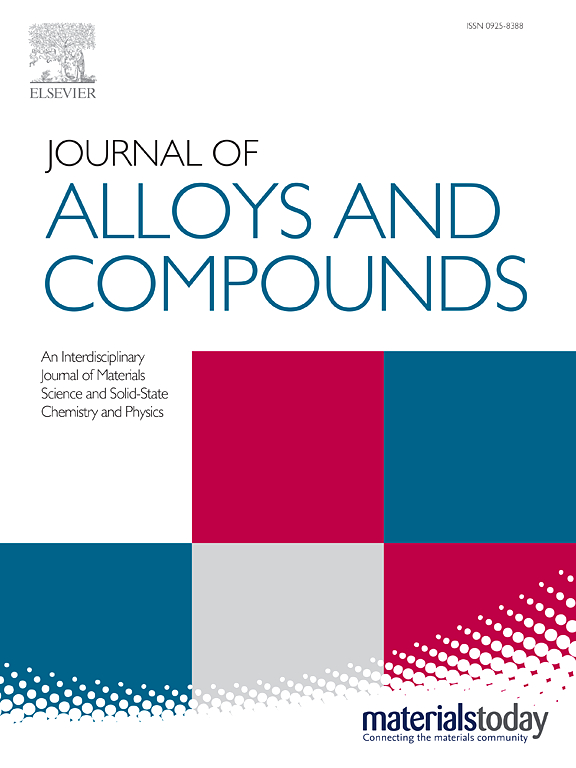Dissolution behavior of the secondary γ' precipitates in nickel-based PM FGH97 superalloy during high temperature pre-precipitation treatment
IF 6.3
2区 材料科学
Q2 CHEMISTRY, PHYSICAL
引用次数: 0
Abstract
The comprehensive mechanical performances of nickel-based PM superalloys are greatly influenced by the morphological characteristics of the secondary γ' precipitates. To understand the dissolution and coarsening behavior of the secondary γ' precipitates during high temperature pre-precipitation treatment, a series of tests were carried out using a dynamic dilatational machine with a temperature of 1150 °C and holding times ranging from 5 min to 240 min. The results show that with the increase of the holding time, the secondary γ' precipitates dissolved initially and then coarsened. Large-sized dendritic secondary γ' precipitates dissolved at the top of them, and gradually changed into a cuboidal shape during the early stage of dissolution. Meanwhile, the small-sized cuboidal secondary γ' precipitates split into different shapes from the γ/γ' phase interface, including Doublet, L-shaped, Triplet and Quartet. Compared to the large-sized γ' precipitates, the small-sized ones dissolved faster. As the secondary γ' precipitates coarsened through neck connections caused by diffusion, the large-sized cuboidal secondary γ' precipitates started to split and dissolve from the center. Nanohardness results indicated that there was a relationship between hardness and the size of the secondary γ' precipitates. As the size of secondary γ' precipitates decreased, the average hardness increased.
高温预沉淀处理中镍基PM FGH97高温合金中二次γ′相的溶解行为
二次γ′相的形态特征对镍基PM高温合金的综合力学性能有很大影响。为了解高温预沉淀过程中二次γ′析出相的溶解和粗化行为,在1150℃、保温时间5 ~ 240 min的动态膨胀机上进行了一系列试验。结果表明:随着保温时间的延长,二次γ′析出相先溶解后粗化;大尺寸的枝晶次生γ′析出物溶解在其顶部,并在溶解初期逐渐转变成立方体形状。同时,γ/γ′相界面上的小立方二次γ′析出物分裂成不同的形状,包括双态、l形、三重态和四重奏。与大尺寸γ′相相比,小尺寸γ′相溶解速度更快。随着二次γ′析出相通过扩散形成的颈连接变粗,大尺寸的立方次γ′析出相开始从中心分裂溶解。纳米硬度结果表明,硬度与二次γ′析出相的大小有一定的关系。随着二次γ′析出相尺寸的减小,平均硬度增大。
本文章由计算机程序翻译,如有差异,请以英文原文为准。
求助全文
约1分钟内获得全文
求助全文
来源期刊

Journal of Alloys and Compounds
工程技术-材料科学:综合
CiteScore
11.10
自引率
14.50%
发文量
5146
审稿时长
67 days
期刊介绍:
The Journal of Alloys and Compounds is intended to serve as an international medium for the publication of work on solid materials comprising compounds as well as alloys. Its great strength lies in the diversity of discipline which it encompasses, drawing together results from materials science, solid-state chemistry and physics.
 求助内容:
求助内容: 应助结果提醒方式:
应助结果提醒方式:


